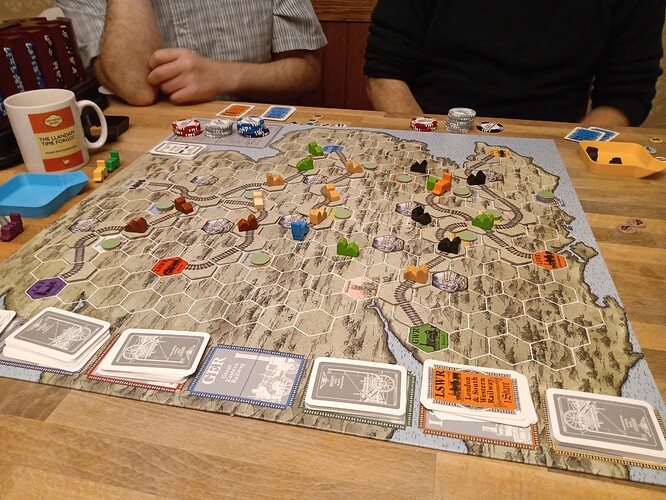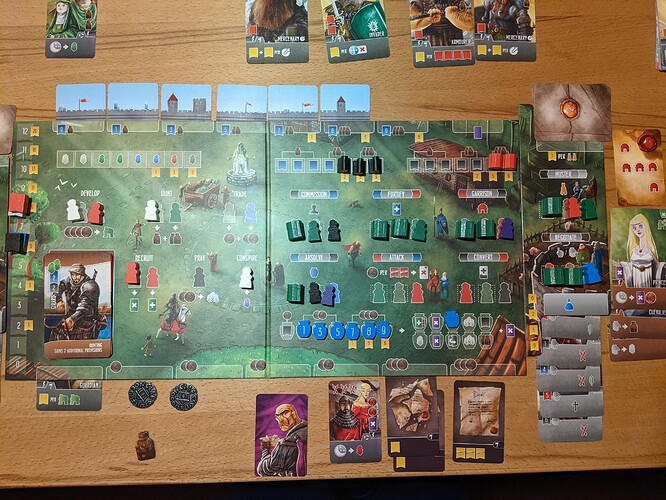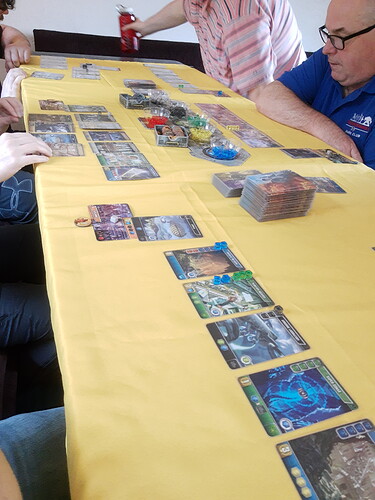Tackled the second chapter of The Princess Bride Adventure Book Game , had one interruption, then won. Some confusion about how and when you move the ship along, not sure if we did that correctly.
The Key:Sabotage at Lucky Llama Land , first play. First game went badly (for me), just couldn’t put anything together. Sometimes you just need one vital bit of information and it falls into place, but it wasn’t happening for me. Won the next two games of it though, that felt good. It’s cool that each game in this series has a new bit you haven’t seen, but mostly they are the same, using the same icons and everything. This game is rated as one out of three, you are only generating a three digit code (Murder at the Oakdale Club is rated two out of three, and requires a four digit code).
Brass: Birmingham , had this game for so long, finally sat down to learn it. Rodney does a good video on it too, and we watched a bit of that on the day. In a round, each player gets two actions. Actions are build, sell, take out a loan, scout (get wild cards), develop, and network (place a link between two cities). Build is the most involved action. To build, you need a card with a location, or an industry card. You have to take your lowest building tile of an industry first. Some buildings give you coal, iron, or beer, which can then be used by yourself or anyone else. You want your coal/iron to be used up, because then that tile flips, giving you points, and increasing your income level. For other tiles, you flip by using a sell action. There are two eras to go through – canal and rail. In the canal era, you can only build boat links between locations. In the rail era you get to build rail links.
It’s slow going at first, your income starts at zero, so you’ll find yourself having to take out a loan or two to get started. We ended up only playing the first (canal) era, it was just taking too long. One player didn’t seem to like it, and I can’t say it was very exciting for me. One player seemed to be doing quite well ,although he was annoyed when I managed to sell a tile using mostly his connections (it was unintentional). We might have another crack at it next week, before we forget how to play. Really didn’t grab me.
The Key: Theft at Cliffrock Villa first play. This is actually the first in the series, and, like Lucky Llama Land, it’s rated as one out of three. Did pretty badly. I was very confused by a certain card type, which shows a blurred picture. I thought it was a picture of a persons backpack, but, after cough checking the rulebook (and checking Rodneys how to play), it turns out its a character portrait, with one very small detail shown not blurred. I think I got one out of ten correct, very hard to make it out. Why did I keep taking those cards? Ummmm, not sure. The other two players didn’t take any and seemed to work it out ok. I did a bit better in the second game, got the solution, but waaaaaay too many cards used. And in the third game, didn’t figure it out at all, and had so many cards (even more than for game two). Those blurred id cards were killing me, but, without them, couldn’t make any connections. Still fun, but a bit frustrating. My ranking for the three games would be Oakdale, Llama land, Cliffrock.
The Crew: Mission Deep Sea
Fantasy Realms , X 2. No high scores, won the second game (just!)




